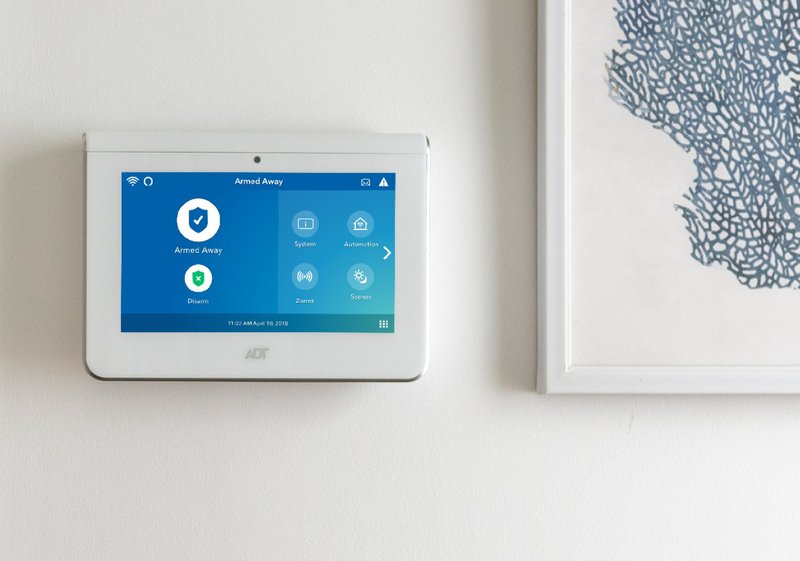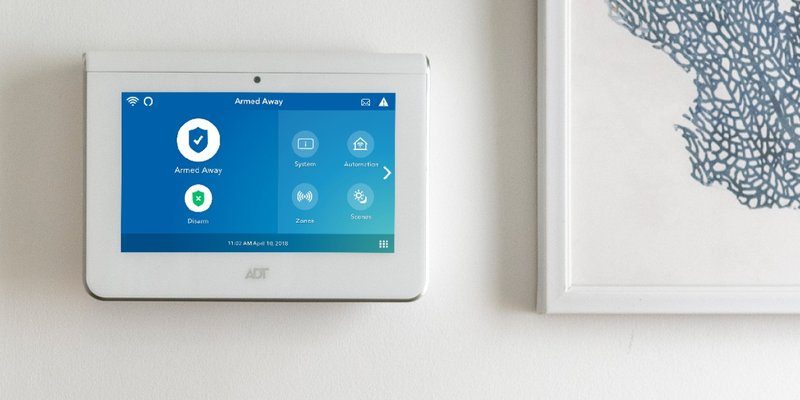
Honestly, this question stumps a lot of homeowners, especially if you’ve invested in a professionally installed setup with fancy remotes, multiple sensors, and all the bells and whistles. ADT security systems don’t just protect your TV—they become part of your home’s heartbeat. So, figuring out whether the next owner gets the same coverage you did isn’t just a technical detail. It’s the difference between sleeping easy and worrying about what happens after moving day.
Let’s walk through what “transferring an ADT warranty” really means, step-by-step, so you know exactly what to expect—whether you’re selling, buying, or just planning ahead. Trust me, it’s not as straightforward as passing along a car manual.
ADT Security System Warranties: What’s Actually Covered?
Before we talk about transfers, we need to understand what kind of warranty you *actually* have with your ADT system. ADT doesn’t do one-size-fits-all when it comes to coverage. Instead, it offers a range of protection plans, depending on when you signed up and the type of system you’ve got.
Here’s the thing: Some ADT customers have a basic warranty that covers defects or repairs for a year, others might have an “Extended Limited Warranty” (sometimes called a Quality Service Plan) added to their monitoring contract. This plan can cover labor and replacement parts for as long as you’re an active, paying customer.
- Standard Warranty usually covers manufacturer defects—think faulty batteries, code issues, remotes that won’t sync, or sensors that refuse to pair.
- Extended Warranties (often extra, or built into longer monitoring agreements) can cover accidental damage and troubleshooting help. They’re a bit like AppleCare, but for your security system.
But—and this is important—the warranty is almost always tied to the *original purchaser* and the *specific address* registered during installation. ADT tracks everything through service codes and account numbers, not just the physical hardware. So even if the battery in your window sensor dies right after you hand over the keys, the next owner might not be able to march right in and claim a free replacement without jumping through a few hoops.
Can You Actually Transfer Your ADT Warranty?
Now, to the heart of the matter: is it possible to transfer your ADT warranty along with your security system when you move or sell your house? The short answer is… maybe, but not by default.
ADT warranties are written to the *customer*—that means the name on the original contract, not just anyone living at the property. The warranty also follows the *service address,* which makes sense from a security standpoint but complicates things when the owner changes.
Typically, here’s what happens:
- Most ADT warranties don’t automatically transfer to a new owner. If you sell your house, and leave the security system behind, the warranty coverage doesn’t magically move to the next person who walks in the door.
- Some exceptions exist if the buyer signs up for a new monitoring contract. In certain cases, ADT might let the new owner “reactivate” the equipment under their own name. The warranty then resets, and any remaining special coverage is determined by their new contract—not your original deal.
The fine print: Codes, synching, and troubleshooting support may require a technician visit or a new agreement. If your system is under an extended warranty, and the buyer is keen to keep the same remote, sensors, or battery backup, they’ll need to get in touch with ADT directly.
What Happens When the House Changes Hands?
So, picture this: You sell your home, and the buyers love the existing ADT setup. What’s supposed to happen next?
First, you’ll want to notify ADT that you’re leaving. This usually means calling their customer support line, giving your account code, and telling them to cancel or suspend your monitoring and warranty coverage at your old address.
Then, for the new owners, there are a few scenarios:
- If they want to use the existing ADT equipment, they’ll need to contact ADT to set up a new account. Sometimes, ADT will inspect or reset the system (including changing access codes and pairing remotes) before activating monitoring and a fresh warranty for the new user.
- If they want brand new equipment, they’ll need to arrange an installation—which, of course, comes with its own warranty starting from day one. The original warranty on your system won’t roll over, unless ADT specifically offers a transfer as part of a promotional deal (rare, but possible).
It’s a bit like buying a used car: just because the stereo still works doesn’t mean you get the full bumper-to-bumper warranty the last driver had. The new owner starts their own relationship—and paperwork—with ADT.
Step-by-Step: How to Transfer or Cancel ADT Warranty When Selling
If you’re moving and need to deal with your ADT security system’s warranty, here’s how to handle it without headaches:
- Contact ADT before closing. Let them know you’re selling, and ask what your options are regarding your system and warranty. Be ready with your account details and service address.
- Find out if your warranty can be transferred. In most cases, they’ll say no—but it never hurts to double-check, especially if your contract is newer or has special terms.
- Help the new owner with transition info. Hand over manuals, remotes, battery specs, and any troubleshooting notes. This makes it easier for them to reactivate or reset the system if they want to keep it.
- Close your account or schedule equipment removal. If you’re taking the system with you, ADT can walk you through uninstallation, code syncing, and resetting. If you’re leaving it, your monitoring stops—but tech support for the hardware also ends with your name on the contract.
ADT customer support is your lifeline. Honestly, a five-minute call can save hours of confusion and help you avoid unexpected charges down the road.
Common Problems With ADT Warranty Transfers
Let me explain a few of the headaches that come up when folks try to transfer warranties on ADT security systems. It’s not just about paperwork—there are real-world snags to watch for:
- Account codes and passwords: The original account owner needs to hand these over (or have them changed). If you forget, the new owner can get locked out of troubleshooting or future support calls.
- System resets or pairing issues: Older systems may need a factory reset or fresh remote pairing to work with new monitoring accounts. Miss a step, and your door sensors, camera, or battery backup could get stuck in limbo.
- Equipment age: If your gear is out of warranty—or flagged as “legacy” by ADT—the company might not offer any support or warranty to the new homeowner, even if the hardware technically works.
It’s a bit like inheriting a TV remote with low batteries and no manual. The system “works,” but making it yours can be a hassle unless everything’s updated and clearly documented.
ADT Warranty vs. Other Home Security Brands
You might be wondering, “Is ADT the only brand like this?” Actually, most major home security companies—think SimpliSafe, Vivint, Brinks—handle warranties similarly. Warranties are set up for the original customer at a specific address.
But some DIY brands (like Ring or Nest) do offer more flexible options, especially for equipment-only warranties. These may allow you to transfer device coverage if you register the system with your own code and pair it with a new account. That said, professional monitoring or extended service plans almost always stay with the original purchaser.
Here’s a quick comparison:
| Brand | Warranty Transferable? | Requires New Account? |
| ADT | Rarely (case-by-case) | Yes |
| SimpliSafe | No (hardware warranty, limited support to new owners) | Yes |
| Ring | Sometimes (if re-registered by new owner) | Yes |
So, if you’re buying (or selling) a home with a security system, always check what the brand’s policy is before making promises or plans.
Alternatives: What Else Can New Owners Do?
If you’re the homebuyer and want protection but can’t inherit the previous owner’s ADT warranty, don’t panic. There are a few ways to make sure your system stays safe and supported:
- Negotiate with the seller: Ask if they’ll cover a year of monitoring or help fund new hardware. It’s not standard, but in a competitive market, it never hurts to ask.
- Book a professional reset or inspection: ADT (and most competitors) offer paid visits to check, code, sync, and pair your remotes and sensors to your new account.
- Consider switching brands: If the existing equipment is old or tricky, sometimes it’s easier—and more reliable—to install a new system with a fresh warranty under your name.
Just remember: whatever route you choose, always check the details. Codes, troubleshooting support, and battery replacements may be different for new accounts compared to original warranties.
Key Takeaways: Is Transferring an ADT Warranty Worth the Hassle?
So, circling back to our original question, *can you transfer warranty on a ADT security system to a new owner?* The honest answer is: probably not, unless you go through ADT and set up a new account with the new owner’s details. Even then, the coverage restarts, and you don’t get to “gift” any unused warranty time from your own contract.
Here’s what matters for buyers and sellers:
- The warranty follows the customer and address, not just the gear.
- Transfers are rarely automatic. It usually takes a service call and a bit of paperwork.
- ADT (and most competitors) want the new owner to start their own contract. This keeps things secure and ensures everyone knows who has access to codes and support.
If you’re planning a move, don’t stress too much about “losing” your ADT warranty. Make the transition as smooth as possible by coordinating with ADT, sharing manuals and remotes, and helping the next owner get started on the right foot. Whether you’re handing over just the keys or a whole network of smart sensors, a little up-front effort makes all the difference in keeping everyone—and everything—safe.
